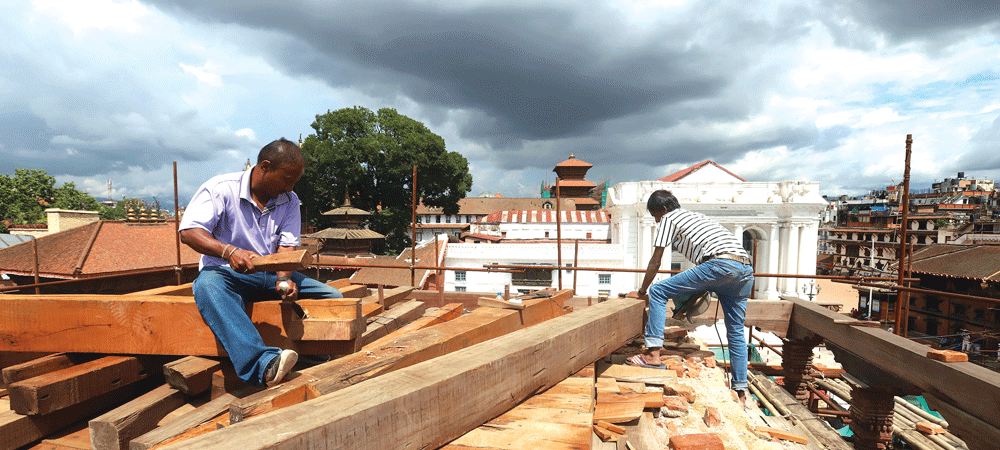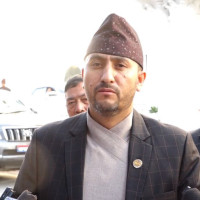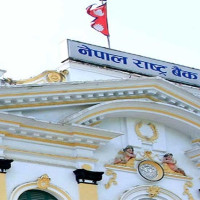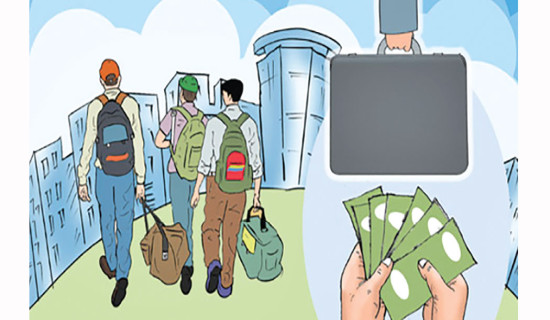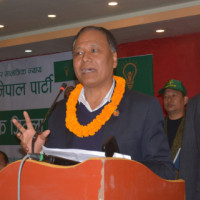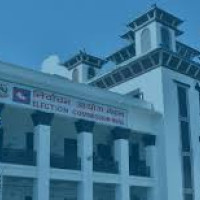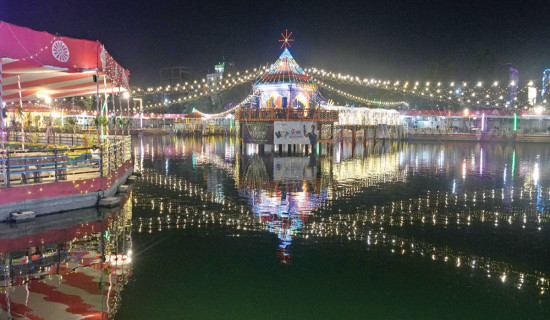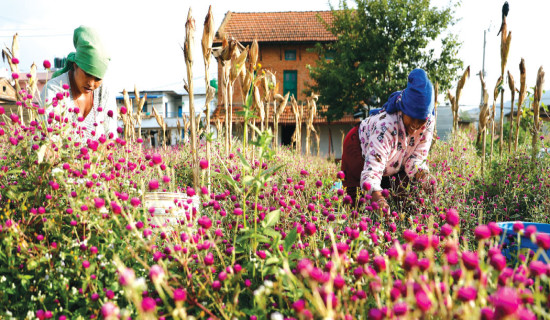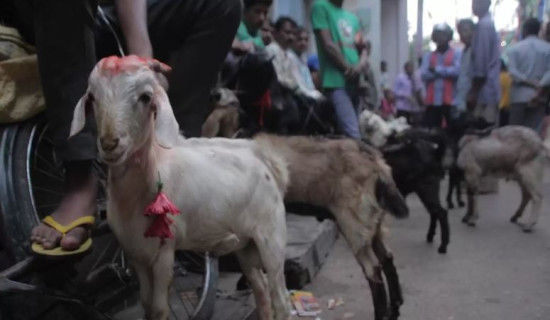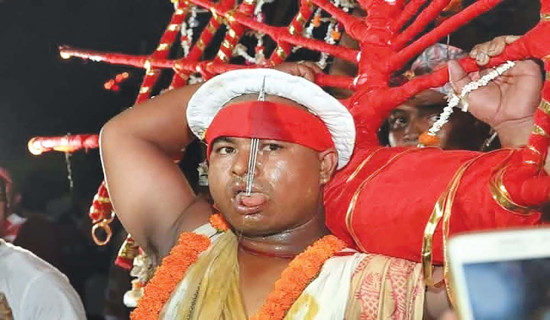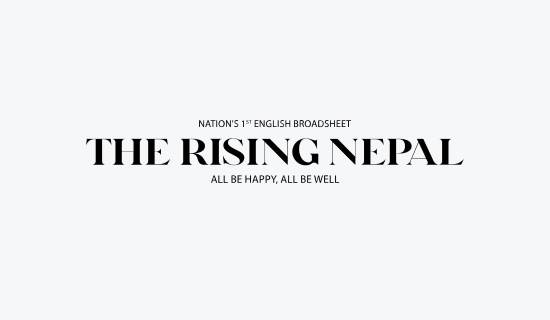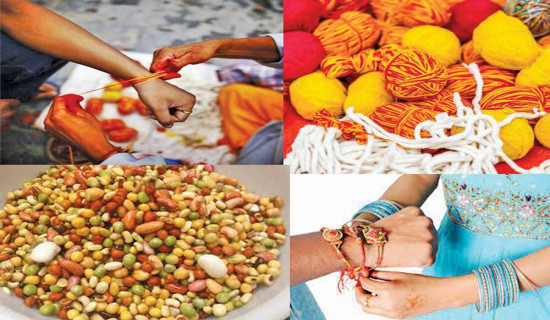- Tuesday, 16 December 2025
Building heritages back traditionally
Kathmandu, Dec. 24: Rapid and haphazard urbanisation had already been claiming the natural and cultural heritage of Kathmandu Valley and the adjoining cities for decades when the 2015 earthquake struck and further destroyed the centuries-old temples, shrines and public shelters in the region.
The quake, which registered a moment magnitude of 7.8, was nothing short of a calamity for Nepal’s heritage and damaged 406 temples in the three ancient cities of Kathmandu Valley. Additionally, many houses which contained countless artistic wood and brick crafts were also destroyed.
To restore this lost heritage and encourage people to maintain the traditional aesthetics and artistry when building back, the federal and local governments introduced several policies, one of which included providing monetary support. This worked, to some extent, in Bungamati, Khokana, Sankhu, Panauti and other historic cities around the Valley’s core.
In Bungamati of Lalitpur Metropolitan City (LMC), for instance, 576 houses were registered as damaged by the earthquake. Of them, 200 houses were built to meet the standards of what was deemed to be a ‘traditional house’.
These criteria required a house to be less than 35 metres in height measured from the ground, adhere to strict requirements dictating the size and design of doors and windows and not have outer plaster.
In Khokana, over 650 houses were rebuilt in this traditional way. A total of 834 houses had sustained damages in the settlement located in LMC Ward 21.
“We requested the locals here to build their houses in line with the principles of our native architecture when they rebuilt their homes and other buildings,” informed Ward Chairman Rabindra Maharjan.
Saying that it was a collective effort, Maharjan added, “We all needed and still need to work together to revive our town’s former glory.”
However, he complained that the metropolitan city did not provide any assistance. “The federal government provided funding of Rs. 300,000 through the National Reconstruction Authority but the metro did not give anything,” Maharjan said.
Similarly, in Shankharapur Municipality, 400 houses of the total 900 damaged by the April 2015 tremor have been rebuilt following these criteria.
Radha Krishna Shrestha, spokesperson for the municipality, informed that the government had provided separate grants amounting to Rs. 300,000 and Rs. 125,000 through the local government to motivate the locals to rebuild their homes in the traditional way.
Meanwhile, Panauti Municipality is working on reconstructing 71 houses in its historic core to strengthen its bid to become a United Nations Educational, Scientific and Cultural Organisation (UNESCO) World Heritage Site. Of them, nine houses have been fully rebuilt, 17 are under construction and work will begin on the rest in the coming days, as per the municipality.
Here, the local level has provided grants ranging from Rs. 120,000 to Rs. 400,000 to its residents for this purpose.
However, while the townships surrounding the Valley have made an effort to preserve indigeneity in their post-quake reconstruction, the inner, and arguably the most well-known, sections of Kathmandu, Lalitpur and Bhaktapur outside the monument zones do not seem to have paid heed to this.

